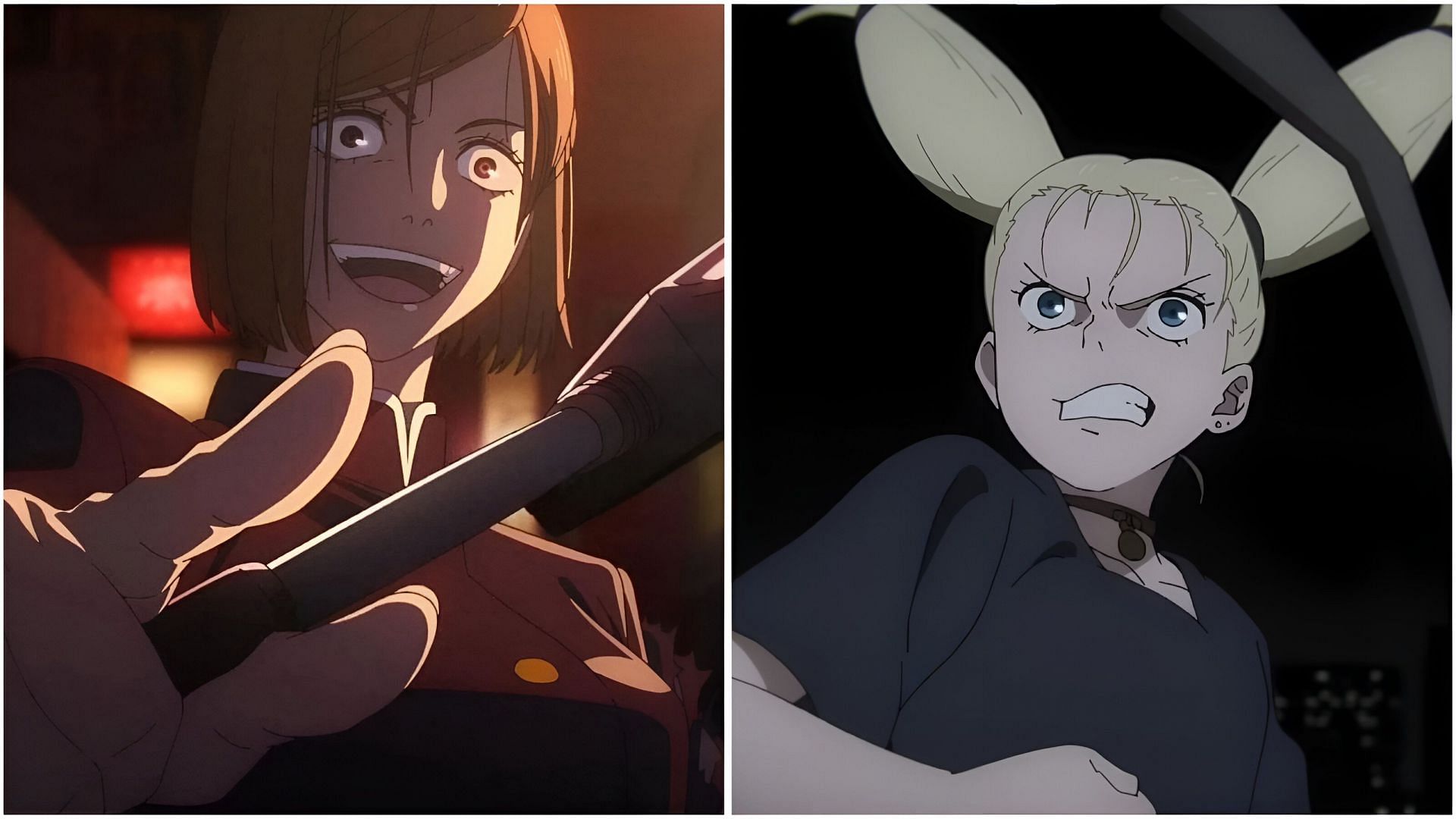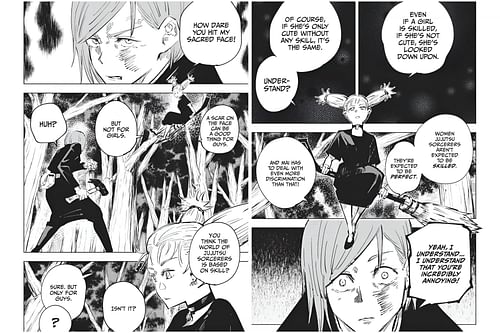
Nobara and Momo's conversation in Jujutsu Kaisen highlights one of Akutami's best authorial efforts
Jujutsu Kaisen has received praise for its storytelling and address of social issues. One clear direction this maneuver took was with the fight between Nobara and Momo in the Kyoto Sister-School Exchange Event, through an argument that is nothing short of a criticism of a society based on expectations and misogyny.
Momo’s character highlights the duality of power and perfection that women in jujutsu society are pressured into, while Nobara’s brilliance defies that status quo entirely. As the fight between Maki and Mai Zenin plays out, the sequence highlights systemic struggles with women working against the system both in the story and the real world. Akutami uses this clash to challenge notions of feminine strength and femininity in shonen.
Disclaimer: This article reflects the opinion of the author.
Momo and Nobara's clash of ideologies in Jujutsu Kaisen

Nobara and Momo’s debate explores their experiences as women in a misogynistic society. Momo laments the unrealistic expectations placed on female sorcerers to be both flawless and formidable, reflecting struggles like those faced by Maki and Mai Zenin, whose abilities are dismissed due to gender bias within the Zenin clan.
Nobara’s passionate rebuttal rejects this perspective, defying the notion that societal pressures should define her identity. Instead, she advocates forging one’s path free from such constraints. Their clash highlights two approaches to systemic oppression: Momo’s resignation to societal expectations versus Nobara’s rebellion against them, showcasing contrasting paths of empowerment.
Akutami's subversion of female representation in Shonen manga
The argument between Momo and Nobara serves as a meta-commentary on the treatment of female characters in shonen manga, where women are often judged based on appearance rather than development. Momo’s speech reflects frustrations with these arbitrary standards.
Akutami’s response is revolutionary—by giving Nobara and Maki visible scars, he challenges the expectation that female characters must be physically perfect. These scars symbolize growth, strength, and individuality, with Maki’s transformation highlighting her liberation from the Zenin clan’s constraints, while Nobara’s injuries demonstrate her resilience, reframing them as signs of empowerment rather than flaws.
The narrative promise fulfilled
Gege Akutami’s redesign of characters like Nobara and Maki with facial scars fulfills a “narrative promise” to explore societal pressures on women, as highlighted in Nobara and Momo’s argument. These scars reject traditional beauty standards, symbolizing personal growth and resilience.
While characters like Yuta and Yuji also bear battle marks, the focus on Maki and Nobara challenges perceptions of women in fiction, encouraging audiences to value them for their actions and individuality rather than idealized appearances. Akutami’s bold approach reinforces the theme of rejecting societal expectations and embracing authentic, multidimensional character development.
Raising the bar for representation
Jujutsu Kaisen differentiates itself from the majority of shonen manga by not shying away from addressing societal problems while providing captivating stories. Nobara and Momo’s argument, alongside the following redesign, is yet another example of Akutami’s commitment to genre subversion. With an ear to the hardships faced by women and a pro-women, no-holds-barred response, Akutami has set the standard for women in anime and manga.
In its heralding narrative promise, Jujutsu Kaisen encourages readers to interrogate not only the specific fantasy world of jujutsu sorcery but also their own conceptualizations of power, beauty, and identity. In so doing, it somehow solidifies itself as a design- and thematically groundbreaking work that deftly centers bombastic combat with deep-seated social commentary.
In conclusion
Jujutsu Kaisen stands as a pioneering work in its approach to both storytelling and character representation, particularly regarding its treatment of female characters. Through the argument between Nobara and Momo and the subsequent redesigns of characters like Nobara and Maki, Akutami challenges long-standing conventions in shonen manga by subverting traditional notions of beauty and strength.
With a series of fast-paced narratives jolted with social commentary, Jujutsu Kaisen sets the standard for female representation in anime, prompting a wider discussion on ornamental misogyny. This single episode not only rewrote the expectations of female empowerment in the show but also raised the bar for the genre and adult storytelling as a whole.
Also read
- Nobara getting sidelined for Jujutsu Kaisen's Culling Game Arc was a blessing in disguise
- MAPPA needs to give Jujutsu Kaisen anime-original content, and not just in fight scenes
- Hakari may have cost Jujutsu Kaisen fans a would-be iconic Sukuna moment
- Yuji can't damage souls in Jujutsu Kaisen, and fans who say otherwise